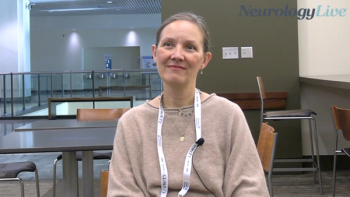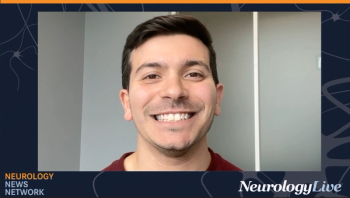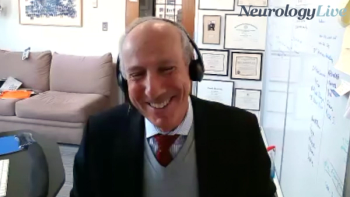
The Benefits of Telehealth Appointments for Pediatric Patients with SMA
A discussion of the benefits of using telehealth for SMA management for clinicians and families.
Episodes in this series

Craig Zaidman, MD: Sometimes I help families choose telehealth because I know I don’t need to examine them to address their issues. When I get contacted by families with particular concerns, sometimes they want to come in to see me, but I know that I can handle it over telehealth and it’s more efficient for them, so I usually encourage that. Issues with wheelchairs or orthotics are examples where I can discuss with them what they need and then triage it to the correct route. We handle some of that stuff in the clinic in person, and that’s convenient but only if you can get there. If we’re expecting snow, I convert a lot of my appointments to telehealth. That’s going to be very convenient for people, rather than having them wait to get rescheduled with me.
It’s helpful with a lot of issues, including changes in how somebody walks, which is a common concern among patients with SMA [spinal muscular atrophy]. “I feel like my son’s walking has changed.” I can watch someone on telehealth walk down the hall and have the parents demonstrate range of motion at an ankle or knee, and I can determine whether someone needs to be referred to physical therapy [PT] for stretching or potentially to a surgeon for a conversation about surgical release. Those things have surprised me. I feel like I can do a reasonable job with that decision-making over telehealth, but I would have previously guessed that I had to see that patient in person.
Crystal Proud, MD: We’re reminded over telehealth, especially as pediatric specialists, that so much of what we do is observational. Some things truly require laying the hands, like reflexes. But a lot of what we do is observe—observe movement, even observe someone playing. I found it interesting that for some of our younger kids—maybe not Hannah’s and Briggs’ ages—being in their own environment at home with toys and things around them gives me a nice perspective of their manipulation of toys and their maneuvering around a room or the way they’re seated. Sometimes in that home environment, I get a better observation of their abilities than if they’re exhausted from my very long visits, as Hannah knows. Maybe they’re not in a good mood or hungry or not excited about participating in PT assessments for the day. Sometimes telehealth can give us a fresh perspective.
Craig Zaidman, MD: My favorite thing about telehealth, or what makes it easiest for me, is when the family has the opportunity to flip the camera. When I’m on somebody’s desktop, I get a very specific view, usually of their chest and above. That’s hard. But if somebody is on a laptop or a phone and they can flip the camera, then I can have them hold the camera up so I can see the whole child. The parent can move the camera backward, and I can see the whole child lying on the ground or sitting or standing. I can watch them walk down the hall or even go up and down the stairs. They can move around their house. That’s a much better interface for me than when a person is on their desktop, and there’s a single view they can achieve with the camera. Maybe they can swivel it side to side, but that’s it. That makes it hard.
Crystal Proud, MD: That’s a good point. Hannah, maybe your mom and dad can talk about their experience with telehealth. I’d love to hear your thoughts on what you like and don’t like about it.
Charlene: I’ll talk about it because I’m the one who always does it. It’s been convenient. I did 1 visit where I was at work and Hannah was at home doing virtual school, and all 3 of us were at the same telehealth visit. That was a conversation about medicine. It was great because I didn’t have to leave work, and she was able to pause school for a few minutes and do all at the same time. That worked out very well. I like it. On certain things, I still like coming to see you as well.
Crystal Proud, MD: I’m glad, because telehealth isn’t going to replace everything, which is good.
Charlene: On those little quick chats, it works very well. It takes me longer to drive there than it does to see you for that little visit.
Crystal Proud, MD: Exactly.
Transcript edited for clarity.
Newsletter
Keep your finger on the pulse of neurology—subscribe to NeurologyLive for expert interviews, new data, and breakthrough treatment updates.



































